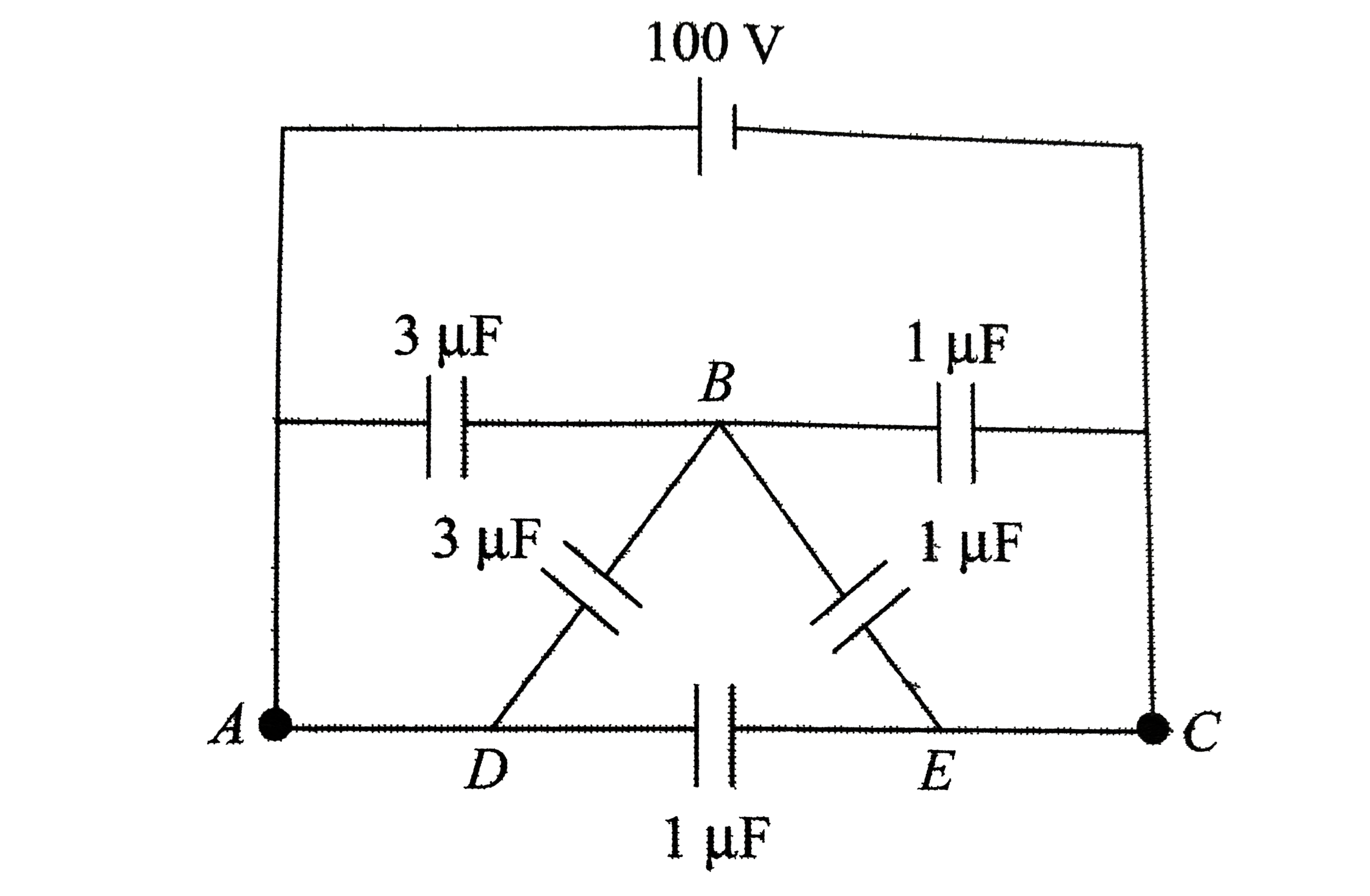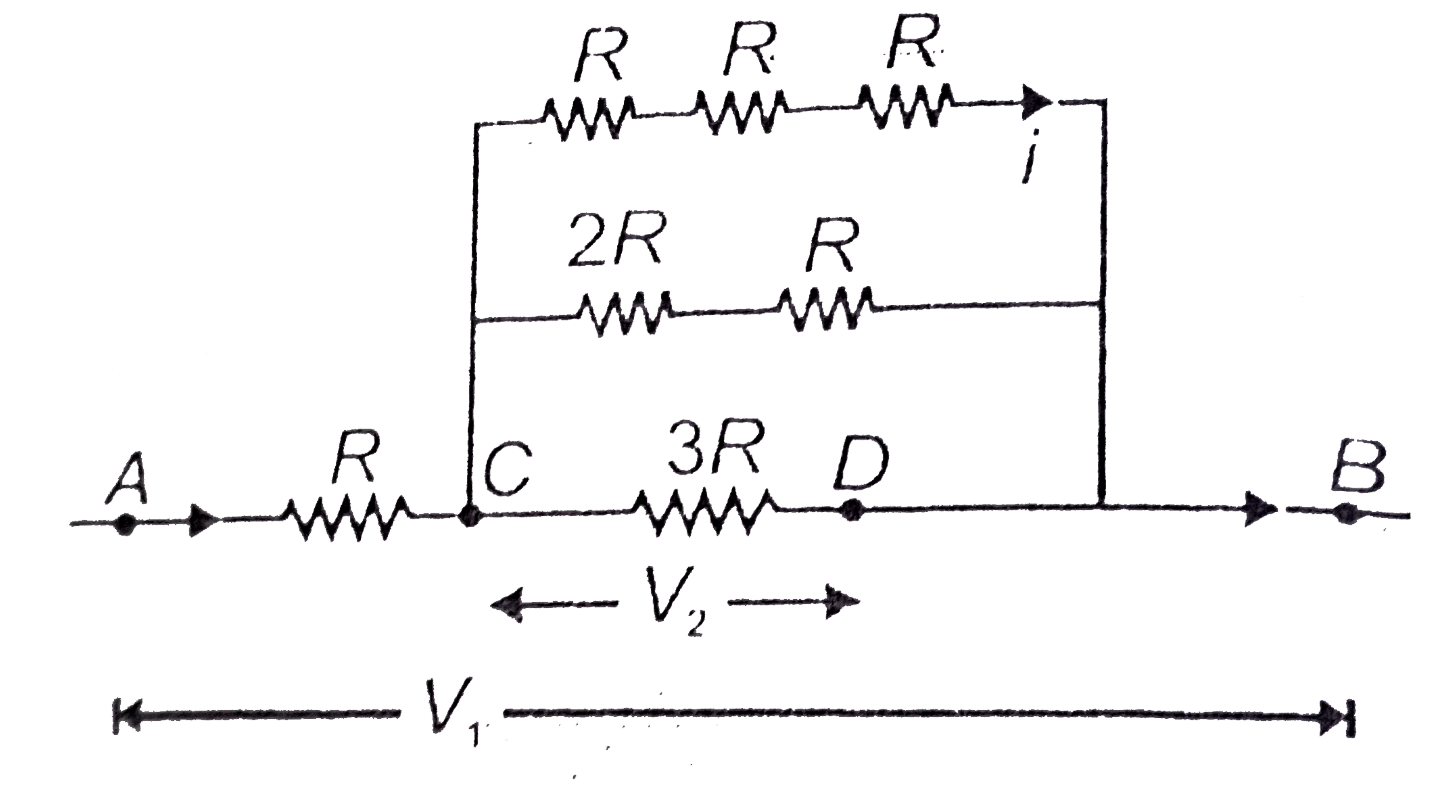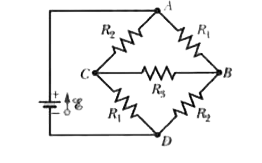Derive Vd=1nqA.Solution in Telugu
1. Consider a conductor with cross section area A. Assume that the two ends of the conductor are connected to a battery to make the current flow through it.

2. Let 'vd' be the drift speed of the charges and 'n' be the number of charges present in the conductor in an unit volume.
3. The distance covered by each charge in one second is 'vd'.
4. Then the volume of the conductor for this distance −Avd
5. The number of charges contained in that volume =n.Avd
6. Let q be the charges of each carrter.
7. Then the total charge crossing the cross section area at position D in one second is 'nqAvd'.
This is equal to electrical current.
∴ Electri current I=nqAvd.
∴Drift velocity(vd)=InqA.
Topper's Solved these Questions
- BOOK - VGS PUBLICATION-BRILLIANTCHAPTER - ELECTRIC CURRENTEXERCISE - APPLICATION TO DAILY LIFE, CONCERN TO BIODIVERSITY37videos
ELECTRIC CURRENT
- BOOK - VGS PUBLICATION-BRILLIANTCHAPTER - ELECTRIC CURRENTEXERCISE - FILL IN THE BLANKS8videos
ELECTRIC CURRENT
- BOOK - VGS PUBLICATION-BRILLIANTCHAPTER - ELECTRIC CURRENTEXERCISE - SECTION - IV (4 Marks Questions)16videos
ELECTRIC CURRENT
- BOOK - VGS PUBLICATION-BRILLIANTCHAPTER - CHEMICAL REACTIONS AND EQUATIONSEXERCISE - ESSENTIAL MATERIAL FOR EXAMINATION PURPOSE1videos
CHEMICAL REACTIONS AND EQUATIONS
- BOOK - VGS PUBLICATION-BRILLIANTCHAPTER - ELECTROMAGNETISMEXERCISE - CREATIVE QUESTION FOR NEW MODEL EXAMINATION (SEC-4)30videos
ELECTROMAGNETISM
Similar Questions
How can you appreciate the role of a small fuse in house wiring circuit in preventing damage to various electrical appliance connected in the circuit ?
04:29View SolutionThe kilowatt hour is the of ……………..
04:28View SolutionState Kirchoff Loop Law and explain.
07:05View SolutionWhy the metals displace the hydrogen from metal? Give example of activity.
03:34View SolutionHow can you verify with experiment."The magnetic field lines are closed loops"?
02:26View SolutionTwo sheet sheets each of length a1 and breadth a2 are used to prepare the surfaces of two right circular cylinders - one having volume v1 and height a2 and other having volume v2 and height a1. Then, (a) v1=v2 (b) a1v1=a2v2 (c) a2v1=a1v2 (d) v1a1=v2a2
05:34View SolutionIn H- atom spectrum V is the wave number V_(1)=V_(min)+V_(max) for layman series V_(1)=V_(min)+V_(max) for balmer series then V_(1):V_(2)
01:41View SolutionIn the system is in steady state. Then
a. VA−VB=_______
b. VB−VC=______
c. VD−Ve=______
d. The energy stored in the circuit is "________"
 .01:41View Solution
.01:41View SolutionFind out following (i) V_(A)-V_(B) (ii) V_(B)-V_(C) (iii) V_(C)-V_(A) (iv) V_(D)-V_(C) (v) V_(A)-V_(D) (vi) Arrange the order of potential for points A, B, C and D.
03:23View Solutionएक कार d दूरी V1 चाल से तथा इससे आगे d दूरी V2 चाल से तय करती है। गति की अवधि में कार की औसत चाल है
View SolutionDerive the formula for critical velcoity (Vc).
03:28View SolutionV_(1) cc of solution having molarity M_(1) is diluted to have molarity M_(2) . Derive expression (in terms of M_(1),M_(2) and V_(1)) for the volume of water required to be added.
06:30View SolutionIn the circuit shown, the potential differences, V1 ( between A and B ) and V2 ( between C and D ), are
 02:55View Solution
02:55View SolutionA car moves with speed v_(1) upto (t)/(3) time and then with speed v_(2) upto next (2t)/(3) time. Path is straight line.What is the average speed of car? " (A) (2v_(1)v_(2))/(v_(1)+v_(2)) (B) (v_(1)+v_(2))/(2) (C) (2v_(1)+v_(2))/(3) (D) (v_(1)+2v_(2))/(3)
09:16View SolutionIn Fig 27-50,ε=24.0V,R1=2000Ω,R2=3000ΩandR3=4000Ω. What are the potential differences (a) VA−VB (b) VB−VC (c) VC−VDand(d)VA−VC?
 02:42View Solution
02:42View Solution

